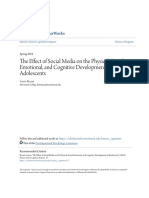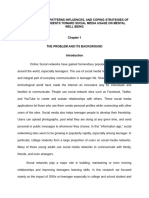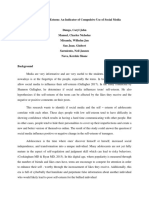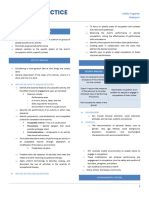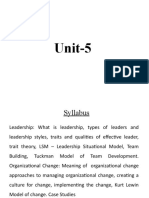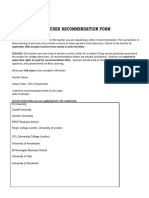Abstract
Since its inception, the world of technology has rapidly and significantly expanded. The The
development of social media platforms and websites has altered the ways that young engage, bind, and
distribute amongst one another. Given the quantity of social media platforms and applications rises
along with teenage use of them. Youth in their adolescence are going through the process of developing
one's identity and self-worth is crucial to this progress. In this stage of growth, teenagers' self-esteem is
probably going to be impacted by the comments they get on social media platforms. There is There is
little study that has been done on evaluating how social media affects adolescents' growing sense of
self-worth. Among the published works that examined the connection between these two concepts;
some of them were released eight years ago.The focus of this theoretical clinical research project was to
review the research and data available on the impact of social media use on youth self-esteem, present
the clinical findings, and note that and more (i.e., 2012 or earlier) and the social media platforms
adolescents use have changed.
Since its inception, the world of technology has rapidly and significantly expanded. The The
development of social media platforms and websites has altered the ways that young engage, bind, and
distribute amongst one another. Given the quantity of social media platforms and applications rises
along with teenage use of them. Youth in their adolescence are going through the process of developing
one's identity and self-worth is crucial to this progress. In this stage of growth, teenagers' self-esteem is
probably going to be impacted by the comments they get on social media platforms.
There is a dearth of studies that have explicitly assessed how social media affects adolescents' growing
sense of self-worth. Among the published works that examined the certain aspects of the link between
these two notions were published eight years or more ago (i.e., 2012 or before), and the social media
sites that teenagers utilize have evolved. The emphasis objective this theoretical clinical research study
was to examine the literature and data that were at hand. about how youth's self-esteem is affected by
social media use, provide the clinical consequences of the present study and offer recommendations for
the necessity and course of action for upcoming investigations. Participants in the included studies
ranged in age from 10 to seventeen years old and active on several social media networks.
The literature currently in publication has shown relationships between social media use and self-
esteem that are both positive and negative. What influences the rises and falls in teenagers' self-esteem
are various elements, including comments, the time they spend on social media, and the purpose of use.
The inconsistent findings bolster the necessity for more investigation into the connection between these
two ideas as social media usage evolves. for upcoming investigations. Participants in the included
studies ranged in age from 10 to seventeen years old and active on several social media networks. The
current body of research shown relationships between social media use and self-esteem that were both
favorable and negative. What influences the rises and falls in teenagers' self-esteem are several
elements, including comments, their social media investment, and the cause for use
The inconsistent findings bolster the necessity for more investigation into the connection between these
two ideas as social media usage evolves.
�Introduction
actions as well as sexual expressiveness. Children's and teenagers' development may be harmed by
exposure to both foreground and background media. Research indicates that media can be a source of
distraction, break daily routines and focus, and provide an endless supply of stimulation (Calvert, 2015).
A few important theoretical vantage points have been used to assess the impact of media use in all of its
forms on kids and teenagers. The first is the social cognitive theory (Bandura, 1997), which examines
how social interactions affect kids' behavior and how kids pick up knowledge from the friends and role
models they make in the media. The impact of media on aggression, sexuality, and identity formation
has been explained by psychoanalytic theory (Calvert, 2015). From the beginning Teenagers were able
to connect online with friends rather than complete strangers in the 1990s thanks to the Internet, which
also allowed for improvements in Internet speed and the emergence of social networks (Pempek,
Yermolayeva, & Calvert, 2009). Adolescents can interact with friends and family instead of complete
strangers thanks to social media platforms like Facebook, Friendster, MySpace, FaceTime, and Twitter
(Calvert, 2015). Similar arguments were made by Valkenburg, Peter, and Walther (2016), who claimed
that Web 2.0 tools like Facebook, Instagram, WhatsApp, Twitter, and other social media sites have
exposed teenagers to a wider variety of online communication options than in the past, along with more
expansive audiovisual platforms intended to foster new friendships and preserve old ones. With the
ease and consistency of 92% of teenagers between the ages of 13 and 17 report using mobile devices,
especially smartphones, for internet access on a regular basis, including 24% of respondents said they
use the internet "almost constantly," while 56% said they use it multiple times a day (Lenhart, 2015a).
It's interesting to note that, according to the Pew Research Center, African American, Hispanic, and
Caucasian youth utilize smartphones or other mobile devices for Internet access differently (Lenhart,
2015a). The findings revealed that whereas 19% of teenagers from Caucasian backgrounds reported
using the internet that frequently, 34% and 32% of African American and Hispanic children, respectively,
reported doing so "almost constantly" (Lenhart, 2015a). Three years later, the Pew Research Center
performed a similar study, and the results showed that 95% of teenagers between the ages of 13 and 17
had access to or owned a smartphone, and 45% said they were online virtually constantly—nearly twice
as many as the previous findings. in 2015 for ongoing usage (Anderson & Jiang, 2018). Teens can now
access a wider range of digital media content online, including the ability to stream television, play
mobile apps, record and upload videos, listen to music, text, call, and view movies or videos. This is due
to the growing popularity of electronic mobile devices like tablets, smartphones, and music players. The
variety of media that is available to kids is enormous and expanding swiftly due to the quick and
extensive expansion of media. This has a significant impact on teenagers' development and peer
interactions during a crucial stage of life. It's crucial to keep in mind that while technology is evolving
swiftly, children's developmental needs don't.Wartella & Calvert, 2014). This review therefore
concentrated on social media platforms and how they affect teenagers. According to O'Keeffe, Clarke-
�Pearson, & others, social media sites are any websites that facilitate social interaction. This includes
blogs, social networking sites, YouTube, gaming websites, and virtual worlds.
Research on the effects of social media on adolescents has started to appear as youth peer interactions
are shaped and altered by the growing use of social media. The existing body of research has
concentrated on the connections between social media use and problems related to mental health,
wellbeing, and self-worth. According to research, teenagers' growing sense of self-worth is impacted by
their peers, and they pursue their approval in a variety of ways (Harter, 2012). Examining the potential
link between social media and self-esteem is appropriate given the knowledge and awareness that
teenagers use social media at a high rate. Nevertheless, there isn't much research on this subject at
present time; some papers were published in 2012 or earlier, and significant progress has been done on
social media platforms in that time.
In light of this, the specific goals of this theoretical clinical research project were to assess the literature
on the effects of youth social media use on self-esteem, offer recommendations for future research
directions as the age of social media users declines and the medium of social media usage grows, and
increase awareness of the need for social media-influenced treatment programs and services.In light of
this, the particular goal of this theoretical clinical research project was to assess the data and research
that was currently available regarding the effect of adolescent social media use on their sense of self,
make recommendations for the future course of research as social media usage and age declines in the
proportion of social media users and to raise awareness of the need for treatments and initiatives for
this heavily social media-influenced demographic.
Literature review
When the "self" develops, people go through a variety of changes that are caused by multiple self-
processes. The developmental changes that take place between the ages of 10 and 17 as a result of the
process of growing self-esteem are the main topic of this literature study. A good or negative attitude
toward oneself that persists throughout time and in various contexts is referred to as self-esteem (J. D.
Brown & Marshall, 2006; Rosenberg, 1965). Adolescence is a critical period for self-esteem development
because it is at this time that people are going through the process of developing their identities (Brewer
& Kerslake, 2015) and are susceptible to the negative effects of self-reflection (Erol & Orth, 2011;
Valkenburg, Koutamanis, & Vossen, 2017). According to Harter (2012), as seen through the lens of
cognitive development, developing cognitive capacities regarding oneself" (p. 10) and to form an
opinion of one's own value. Interactionists like George Mead, Charles Cooley, and James Baldwin
believed that social interactions shape the "self," and they attributed this process to the judgments of
others. An individual's socialization experiences can have a significant impact on the valence of their
self-attributes, resulting in both positive and negative assessments. The opposite is internalized if peers
or caregivers are unsupportive, harsh, or inattentive; approval from others (e.g., peers, caregivers) is
internalized as acceptance of self (Harter, 2012). According to Cooley's looking-glass self-esteem model,
internalizing the opinions of important people influences one's own degree of self-esteem. of worldwide
�self-esteem as it manifestsWhen the "self" develops, people go through a variety of changes that are
caused by various self-processes. The developmental shifts that take place between the ages of 10 and
17 as a result of the process of growing self-esteem are the main topic of this literature review. A good
or negative attitude toward oneself that persists throughout time and in various contexts is referred to
as self-esteem (J. D. Brown & Marshall, 2006; Rosenberg, 1965). Adolescence is a critical period for self-
esteem development because it is at this time that people are developing their identities (Brewer &
Kerslake, 2015) and are susceptible to negative self-perceptions (Erol & Orth, 2011; Valkenburg,
Koutamanis, & Vossen, 2017). According to Harter (2012), from the perspective of cognitive
development, developing cognitive capacities As people grow, they are able to create "higher-order
generalizations about the self" (p. 10) and come to understand their own value as human beings.
Interactionists like George Mead, Charles Cooley, and James Baldwin believed that social interactions
shape the "self," and they saw other people's opinions as a major factor in this process. An individual's
socialization experiences can have a significant impact on the valence of their self-attributes, resulting in
both positive and negative assessments. The opposite is internalized if peers or caregivers are
unsupportive, harsh, or inattentive; approval from others (e.g., peers, caregivers) is internalized as
acceptance of self (Harter, 2012). Cooley introduced the idea of a self-esteem looking-glass paradigm in
which Internalizing the viewpoints of important people helps shape the emerging global self-esteem
level. middle childhood (Harter, 2012). However, if the construction of self is highly
dependent on the internalization of the opinions of others, it can morph into the creation
of a false self that is not authentic to one’s true experience, which social media platform
provides an easy-open door for an individual to create. The following sections illustrate
the development of self-esteem from middle childhood through adolescence
Valkenburg et al. (2017) conducted a longitudinal study in which they sought to
investigate the relationship between youth’s use of social media sites and social selfesteem. In this
study, they described social self-esteem as the degree to which adolescents
“feel accepted and liked by their friends and peers and feel successful in forming and
maintaining friendships” (p. 35). Results of Valkenburg et al.’s three-wave panel survey
showed a positive relationship between adolescents’ (i.e., between 10 and 15 years old)
�social self-esteem and social media use. There was no evidence that social media site use
significantly increased their social self-esteem, as contrastingly, results from the study
yielded support for the idea that higher social self-esteem among participants was
correlated with an increase in the use of social media sites. Valkenburg et al. also studied
the role of feedback from social media sites and found feedback from both close friends
and acquaintances positively affected adolescents’ social self-esteem seemingly in the
short term as opposed to the long term. Other researchers evaluated the negative and
positive impact of social media on adolescents and found the feedback received from
peers on social media, whether positive or negative, has a significant impact on their selfesteem
(Valkenburg, Peter, & Schouten, 2006). This might be explained by the nature of
social media and the ability to provide instant positive feedback (e.g., likes, favorites, re-posts), which
may lead to instant or short-term increases in self-esteem (Valkenburg et
al., 2017). Additionally, adolescents’ ability to be selective in their self-presentation on
different social media platforms, such as Facebook, and the relationships developed from
this selective presentation have the potential to positively affect their evaluations of
themselves and, in turn, their self-esteem (Pantic, 2014).









